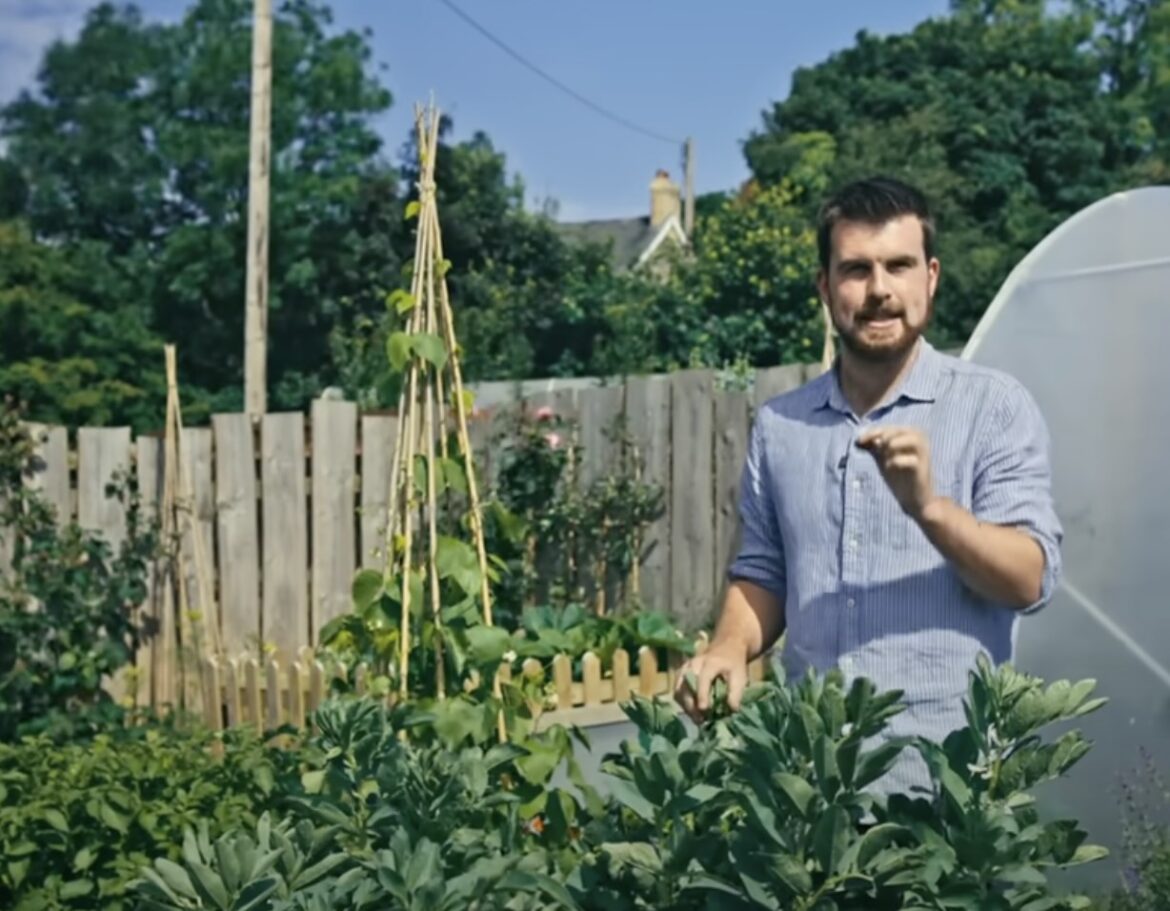…to the value of a healthy garden ecosystem that includes pests!
I have been a fan of Huw’s work for quite a while. He is inspiring, and has a great attitude.
He also gets things done like few others, and his gardens are a testimony to his knowledge.


9 comments
Love it! Month or so ago, I noticed a heavy aphid infestation on one of the tithonia. I thought about spraying soap on them, but decided to just observe for a few days first. They were only on the one plant– not on any of the surrounding plants, and not on any of the other tithonia. And then I started seeing ladybugs. And I decided to just leave it alone and see what happened, because I knew they were there for the aphids and I didn’t want to kill them. After a few weeks, the plant bounced back, I don’t see the aphids anymore, and nothing else is suffering. I don’t eat the tithonia, so it’s worth the experiment.
I have lost two pumpkins to some sort of little worm/grub thing that gets in at the base of the stem, though. They’re my new nemesis. May have to go to war with those guys…
Aunteater, your pumpkin grub sounds like the squash vine borer (SVB).
@Laura: I don’t know! I’ve never had a problem with SVBs before– or rather, if I did, my seminole pumpkins outran them and I still got a good harvest. I always thought the SVBs attacked the vine itself. These things, whatever they are, are getting into the actual pumpkins, and leaving the vines alone. I harvested a small pumkin this week, shelved it in the kitchen, and overnight a bunch of detritus appeared on top of the pumpkin, next to the stem. I investigated and found the worm munching away in a little cavity under the stem, which almost fell off in my hand. Didn’t have a dark head like the pictures of vine borers– sort of a very pale greenish color all over, IIRC. Don’t know what it is. Was able to trim off the damaged bit and eat the pumpkin anyway, but I am so frustrated by these guys! I have started harvesting while they’re still half-green to try and get ahead of them– they will ripen up sitting on the shelf, away from the bugs. I’ve been saving seeds from this lineage for four years now, and not had these things before :( Now I’m wondering if I should start over with fresh genetics next year.
Hmm, doesn’t sound like SVBs. (When you said “base of the stem” I thought you means the main stem where the plant comes out of the ground. I didn’t realize you meant the base of the fruit stem, sorry.)
Maybe pickleworm? Your description of the larvae sounds similar, and apparently they do infest pumpkins. Look here and see of this is what you have: https://entnemdept.ufl.edu/creatures/veg/pickleworm.htm
Good luck!
Hmm. It didn’t have spots like that. It was an almost translucent pale green, no markings that stood out. Mystery worm!
This happened to me as well. I just had a standard jack-o-lantern type pumpkin. It was still green and about the size of an egg. Noticed that detritus (learned a new word, thank you) and my hand accidentally brushed against the flower and the flower fell right off. I looked in the flower, and there it was, a pale green caterpillar having a grand ol time. This was a few days ago. All things considered I think I got it early enough because the pumpkin is still growing. Thought I was in the clear, but then the rabbits came. They ate all the leaves up to the pumpkin.
Sorry about the rabbits! The one time I tried growing chinese spinach, the rabbits got every leaf. If there’s anything good about having a zillion feral cats in the neighborhood, it’s that they keep the rabbits away.
Fire ants are a big part of the problem for me. Well, stink bugs always sting a lot of our fruit, which is annoying also. Having a difficult time training my passion vines to climb the oaks I planted them under. My pep talks haven’t worked. All that aside, as the food forest grows and my grocery rows grow, my pest issues went from apocalyptic to mildly annoying at times. Plenty of wasps and other predators around here now. Dragonflies are cool and do some really awesome work. Now if we could get some lower temps, that’d be great.
I’ve learned to accept the fire ants, and have a highly unscientific way of encouraging them to move along when they’ve set up camp in an inconvenient place, such as in my potted plants. I feed them. I’m working on the theory that the ants live densely, and that they move along when wastes and pathogens build up to a critical level in the nest (if you observe them, you’ll notice the hills don’t stay in the same spot forever– they move around). So when I have any kind of meat scraps in my compost, and I also have a problem fire ant nest, I will go punch those scraps directly into the nest. Ham rinds, floor cheese, poultry organs… fire ants are pretty carnivorous, and they love that stuff. Maybe it’s coincidence but they tend to move along within a week or two. I don’t know if it encourages overpopulation, pathogens, or waste buildup (or all of the above) but it seems to work. I’d love to know if it works for anyone else…
Comments are closed.